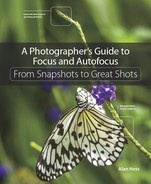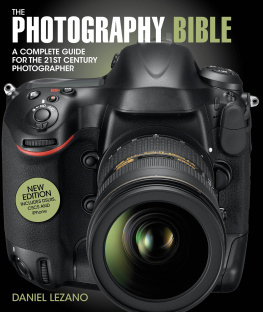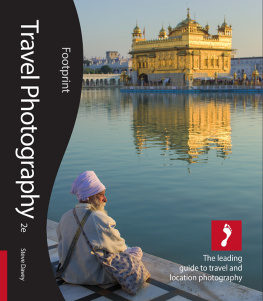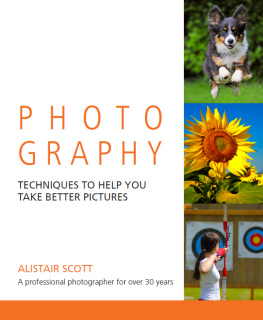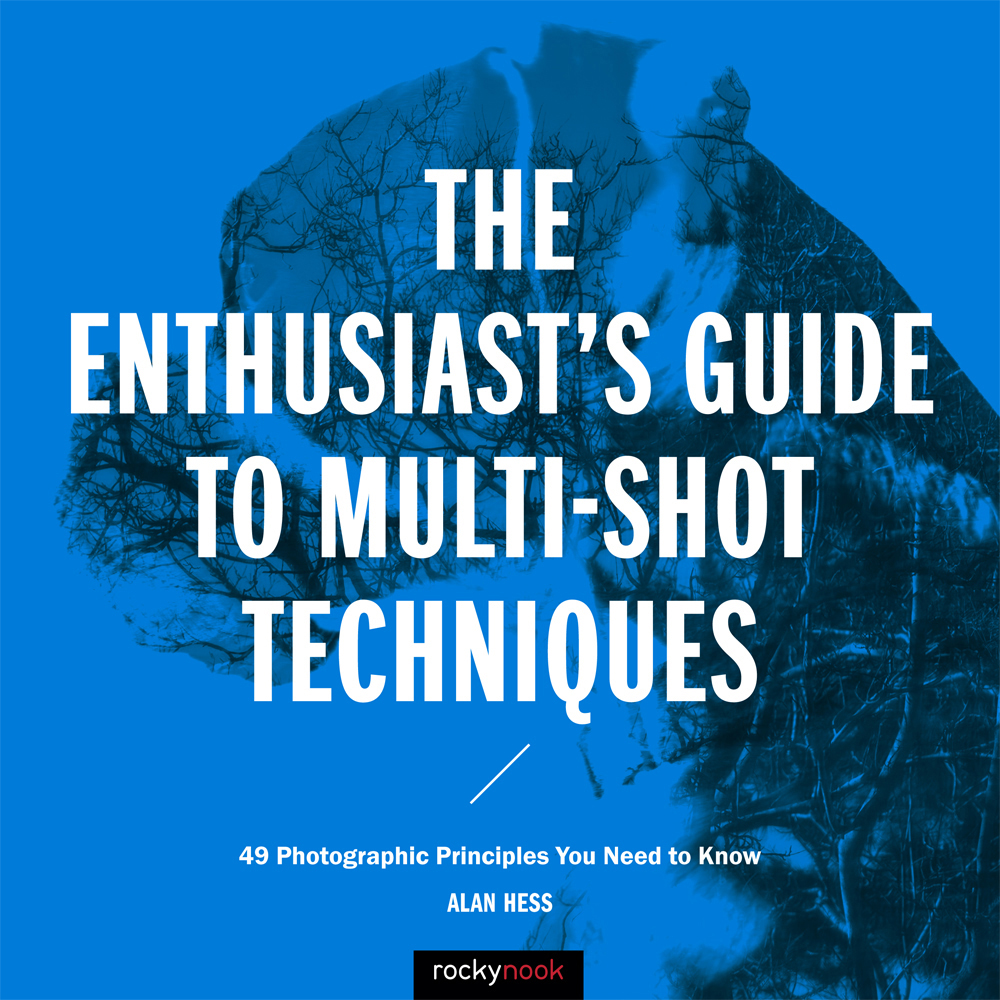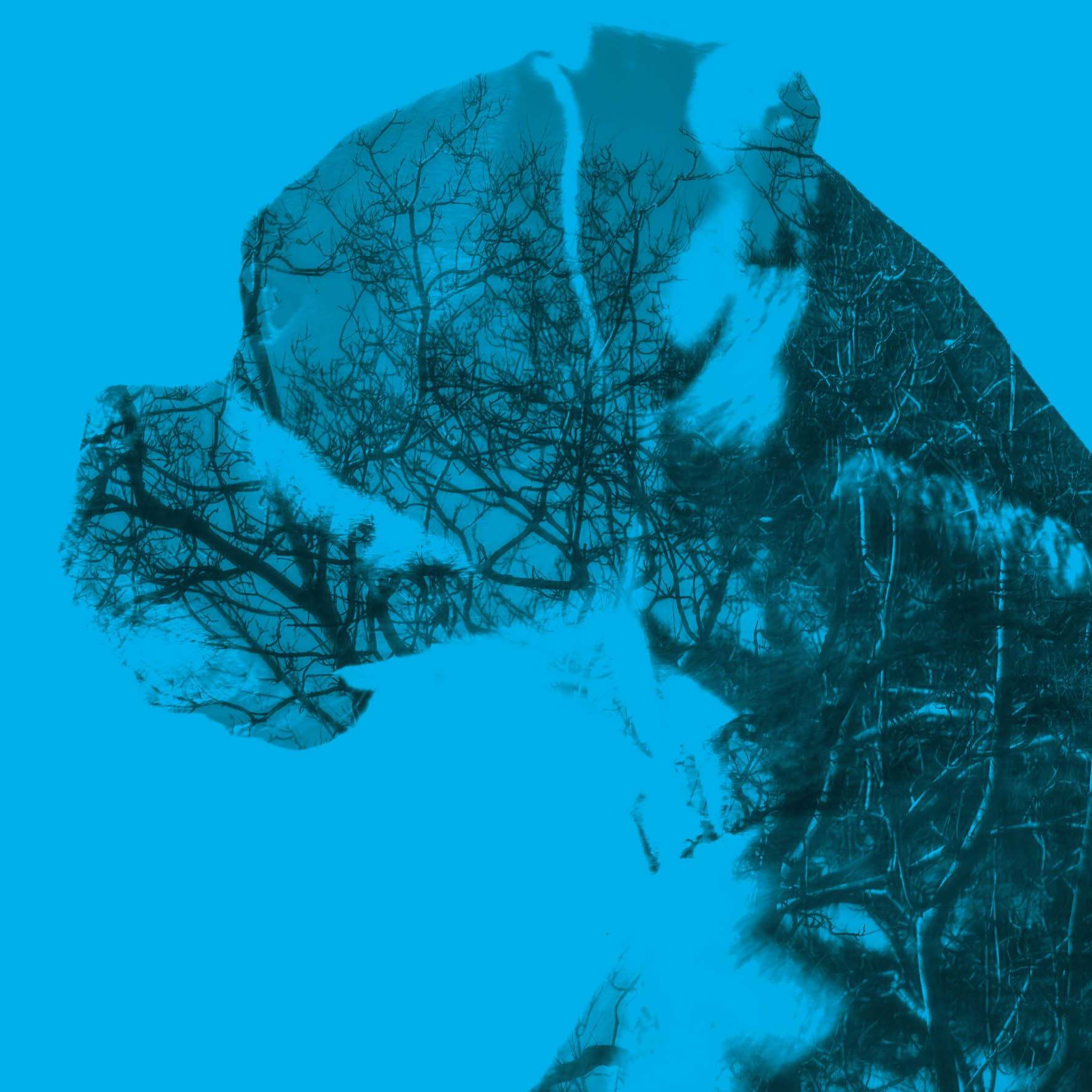
THE
ENTHUSIASTS GUIDE
TO MULTI-SHOT
TECHNIQUES

49 Photographic Principles You Need to Know
ALAN HESS

THE ENTHUSIASTS GUIDE TO MULTI-SHOT TECHNIQUES:
49 PHOTOGRAPHIC PRINCIPLES YOU NEED TO KNOW
Alan Hess
Project editor: Jocelyn Howell
Project manager: Lisa Brazieal
Marketing manager: Jessica Tiernan
Layout and type: WolfsonDesign
Design system and front cover design: Area of Practice
Front cover image: Alan Hess
ISBN: 978-1-68198-134-5
1st Edition (1st printing, October 2016)
2016 Alan Hess
All images Alan Hess unless otherwise noted
Rocky Nook Inc.
1010 B Street, Suite 350
San Rafael, CA 94901
USA
www.rockynook.com
Distributed in the U.S. by Ingram Publisher Services
Distributed in the UK and Europe by Publishers Group UK
Library of Congress Control Number: 2016930702
All rights reserved. No part of the material protected by this copyright notice may be reproduced or utilized in any form, electronic or mechanical, including photocopying, recording, or by any information storage and retrieval system, without written permission of the publisher.
Many of the designations in this book used by manufacturers and sellers to distinguish their products are claimed as trademarks of their respective companies. Where those designations appear in this book, and Rocky Nook was aware of a trademark claim, the designations have been printed in caps or initial caps. All product names and services identified throughout this book are used in editorial fashion only and for the benefit of such companies with no intention of infringement of the trademark. They are not intended to convey endorsement or other affiliation with this book.
While reasonable care has been exercised in the preparation of this book, the publisher and author assume no responsibility for errors or omissions, or for damages resulting from the use of the information contained herein or from the use of the discs or programs that may accompany it.
This book is printed on acid-free paper.
Printed in China
Dedicated to Nadra Farina-Hess
ACKNOWLEDGMENTS

BEING A WRITER can be a lonely job, with late hours spent hunched over a keyboard trying to get the information to sound just right. Its a good thing I have such a great team that takes those words (and images) and creates something special with them. I want to thank all of the people who hand a hand in getting this book into your hands, because without them, this would not have been possible. A huge thank you to Scott Cowlin, Ted Waitt, Jocelyn Howell, Jessica Tiernan, Lisa Brazieal, and the whole Rocky Nook family.
Thank you to my family and friends for putting up with me during the writing process. I know I keep saying it will get easier and Ill work normal hours, but by now you must know that is just not going to happen.
There are a few friends out there who understand what it is like to write a book while still trying to stay reasonably sane. These individuals make doing this easier because they understand the inevitable moments of self doubt and they are there to talk you off the ledge. Two of the best are Glyn Dewis and Dave Clayton, both of whom I owe a piece of my sanitythey can make me laugh when I need it the most.
Finally, I need to thank my wife, Nadra, for putting up with yet another book and the crazy ups and downs that go along with being a photographer and writer. Nadra is calm, cool, and collected, which makes all this possible.
CONTENTS

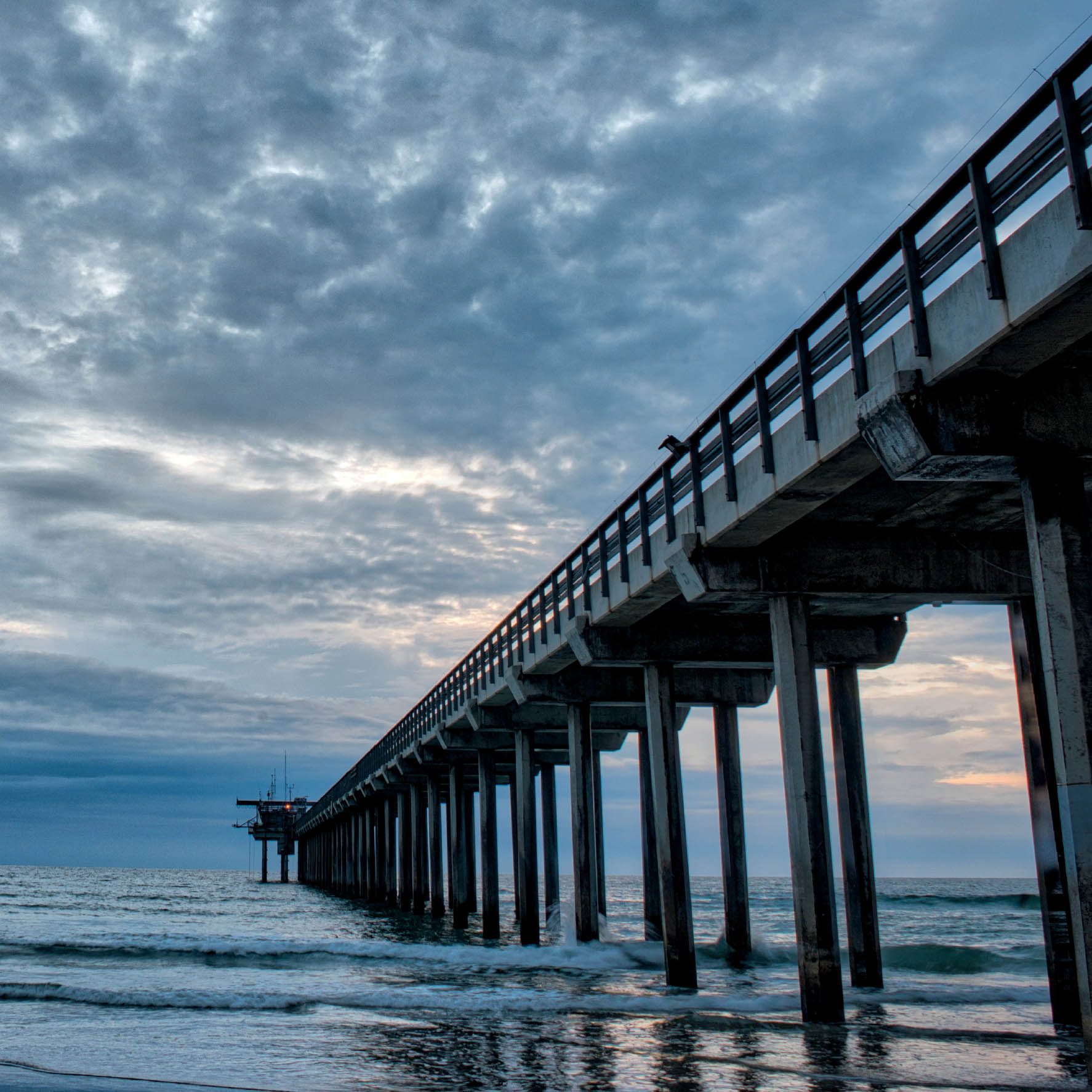
1

DOUBLE EXPOSURE
CHAPTER 1
Double exposure is a photographic technique where you combine two images to create a single image. This technique usually involves just two images, hence the term double exposure, but many digital cameras allow you to blend three or more images into a multiple exposure. For the sake of simplicity, I am going to use the term double exposure throughout this chapter, even though you could combine more than two individual frames.
When using a film camera to create a double exposure, you take two photos on the same piece of film to create a single unique image. With digital technology it is possible to create the same effect with two different images by blending them together in-camera or in post-production with photo-editing software like Adobe Photoshop.
In this chapter I begin by explaining how to create double exposures in the camera, and then I move on to describing how to combine images in post-production using Adobe Photoshop. One of my favorite techniques for creating double exposures is using a flash to illuminate the same subject more than once in the same frame. Its easy and lots of fun to play with. This chapter also covers double exposure techniques for action photos and portraits.
1. DOUBLE EXPOSURE BASICS

WHEN USING FILM to create double exposures, you take the first shot, and then without winding the film forward you take a second shot, exposing the same frame of film to more light and creating two exposures in the same image. When I was first learning the art of photography, I did this on a regular basis, many times by mistake. The first cameras I used were manually operated and you had to remember to wind the film forward after each shot; sometimes I just forgot. After I shot an entire roll, I would to go into the darkroom and develop the film to see what I had captured, and sometimes Id be surprised by a double exposure when I really wasnt expecting it. As cameras got smarter, or at least more advanced, I had to purposely rewind the film back a frame to shoot a double exposure. I still took quite a few double exposures because it was a quick and easy way to create a new and unique image.
When you shoot a double exposure with a film camera, the two exposures are overlaid, one on top of the other, and they are added together. This means the amount of light reaching the film increases when you take the second image. If you shoot the exact same image with the same exposure settings twice and overlay the two exposures, the resulting shot will be a full stop lighter because you are doubling the amount of light that reaches the film or sensor.. Notice that the second image is one stop brighter.


